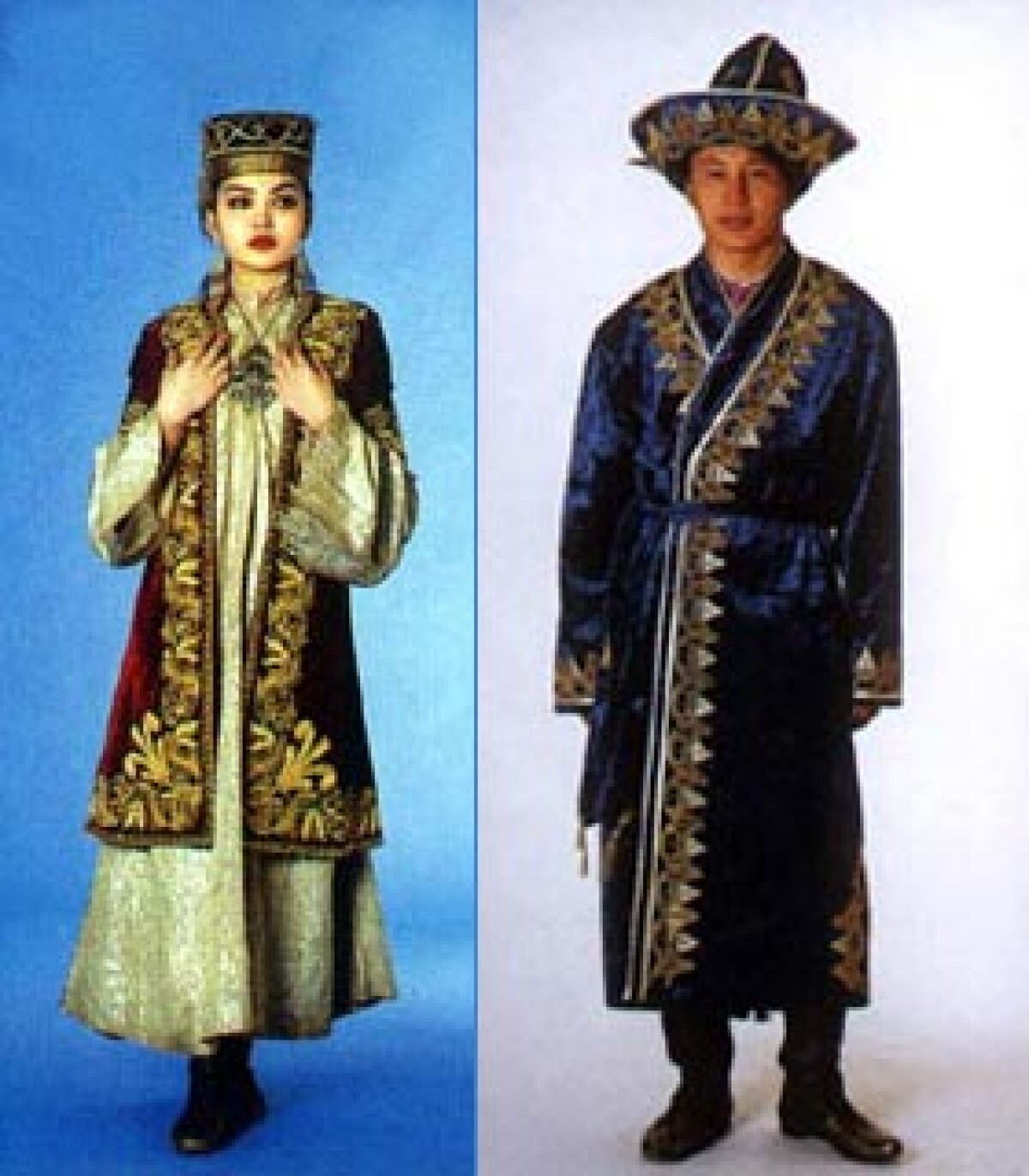
The Kazakhs valued the skins of koulans, saigas and
tigers, as well as the dark fur of raccoon, muskrat, sable, marten, and white
fur of stoats and ferrets. The fur of marten and sable appreciated more than
the fur of other fur-bearing animals. Their skins could be used to sew the fur
coats. The common name of the fur coats among Kazakhs is “ton”. The fur coats
from the fur of animals called “ishik”. Janat ishik is a raccoon fur coat,
“kara tulki” is a fur coat made from the fur of the silver fox, “kyzyl altai
tulkisi” is a fur coat made from the fur of the Alatai red fox.The Fur coat,
covered with sealskin, was one of the most expensive items in the bride's dowry,
it was called «bas ton». Kazakhs knew the technique of making the coats from
swan's down, the down of loons and herons. The coat from the fur of loon in
1878 was exhibited at the Kazakh Crafts exhibiton in Akmolinsk. Another fur
coat was made in the village near the Kurgaldzhino Lake; it was sewn from the
same dark, blue and gray quadrangles that are bordered by narrow black stripes.
For good embossing of the skin of loons, you must have a special ability. The sacred
significance was attached to the caftans or jackets made from the swan's down,
which were traditionally worn by baks. The Fur coats were covered with cloth,
silk or brocade. They were differed by the name of the cloth or by its color. Only
nobles wore a fur coat that was made from blue cloth and covered and trimmed
with the beaver skin – “kok ton”. The coat made from the fur of the premature
foals was quite wide and slightly elongated. Some coats were made from the
goatskin. The longest hair was removed, leaving the undercoat.
Such coats were called “kylka zhargak”. The Kazakhs used the goat skin to curry the chamois and to sew the robes, cloaks and light pants. P.S Pallas noted the fact that the Kazakh clothing was primarily “made from curried goat wool, and therefore was soft and did not spoil during the rain”. “The goat skin was perfect for the outerwear” – wrote I.P Falk. A.I Levshin also wrote that such robes were quite comfortable during the rain and well protected from the winds. The robes from goat skin were also called zhargak. Thirty vintage, suede, embroidered silk robes from different areas of Central and Northern Kazakhstan were shown at an exhibition in St. Petersburg Congress of Orientalists.Suede robes were also presented at the exhibition in Akmolinsk ...
S.Z. Asanova, Almaty, Fashion Academy "Symbat"
From the article: "A Study of History of folk costume".
Photo: www.centrasia.ru